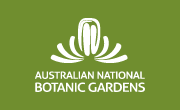Guidelines for the Handling of
Cutting Material, Live Plants and Seeds
Collected from the Wild for the Australian National Botanic Gardens
by Barrie Hadlow
The purpose of this paper is to outline some basic methods of collection to ensure that plant material can be forwarded to the Australian National Botanic Gardens (ANBG) from field collections and arrive in a satisfactory condition.
All propagating material must be accompanied by a voucher specimen from the same plant from which the material is taken in the case of cuttings and seed, and from the same population in the case of live plants. Information concerning the site and plant must be recorded in a field notebook.
All material whether for propagation or herbarium, must be clearly labelled with the field number.
All cartons to be consigned should be addressed to:
-
The Director
Australian National Botanic Gardens
Clunies-Ross Street Black Mountain
CANBERRA ACT 2601
(Attention: Nursery Staff)
Cuttings
Most plant material suitable for cutting will travel well without spoiling if, following collection, it is kept moist and cool. Such material should be collected in the cooler part of the day if possible and dispatched to the ANBG as soon as possible following collection.
The cutting material should be wrapped in damp newspaper and placed in a plastic bag away from any direct source of heat. If water and paper are not immediately available the material may be placed inside a plastic bag which can be inflated by breath to add some humidity before sealing. A waterproof marking pen is necessary for use with a plastic/waterproof label. Prior to dispatch, cutting material should be loosely rather than tightly wrapped in damp paper. Several collections so wrapped can be placed in a plastic bag or each in its own plastic bag. If parcels are over wet and subjected to heat, fungal degradation of the plant material may occur.
Succulent and/or tomentose plant material should be kept less moist when packed. 'Eski' type cool boxes are ideal for temporary storage prior to consignment. Cutting material should be taken from plants of good vigour and health (usually having higher carbohydrate levels). The length of the cutting material taken should exceed the optimum size for the processed cutting by 2 or 3 nodes, however the length depends upon the material available. For one collection sufficient cutting material should be taken to produce 30-40 processed cuttings if enough material is available. These should be taken from one plant and the voucher specimen also obtained from this plant.
Seconds cuttings may be taken, however in most cases terminal shoots and relatively young laterals are sufficient for propagation. The use of secateurs or a sharp knife is essential to minimize the damage to parent plants in the wild.
Live Plants
If plants must be removed from the wild, small young plants are often lifted successfully if sufficient substrate is included with the root system. Freight charges are high so excessive weight should be avoided.
Sheet aluminium foil will hold together the soil/root ball if firmly wrapped and with a 'neck' tie at a level corresponding to the soil surface level. Water may be added if dryness is evident, however as there can be no drainage through foil, overwatering should be avoided. A label must accompany each plant collected.
Plastic bags are useful for containing the lifted plant and creating humidity, however heat build up should be avoided.
Plants with bulbs, tubers, rhizomes etc. may be treated in the same way but may be consigned with little or no substrate material.
Plants should be firmly packed in a carton/box to prevent excessive movement during transportation. Carton labelling is essential for all collections being forwarded, and arrows to indicate the way up/top for safe delivery. Ventilation holes in the consignment carton may help live plant material arrive in good condition, particularly if consigned in hot/humid climatic zones. For most temperate climate plants and xerophytic plant material, this is unnecessary.
Seeds
Fruit should only be collected when it is close to maturity to ensure that viable seed is likely to make collecting worthwhile.
Cotton or brown paper bags are suitable storage containers for fruits and/or seed. Glass jars or plastic should not be used unless seed is exceptionally dry. Bags containing seed should be kept in a well ventilated location to avoid fungal contamination. Cool storage may not be as important for seed as it is for cutting material, however direct sunlight and/or heat should be avoided.
![An Australian Government Initiative [logo]](/images/austgovt_canbr_90px.gif)




